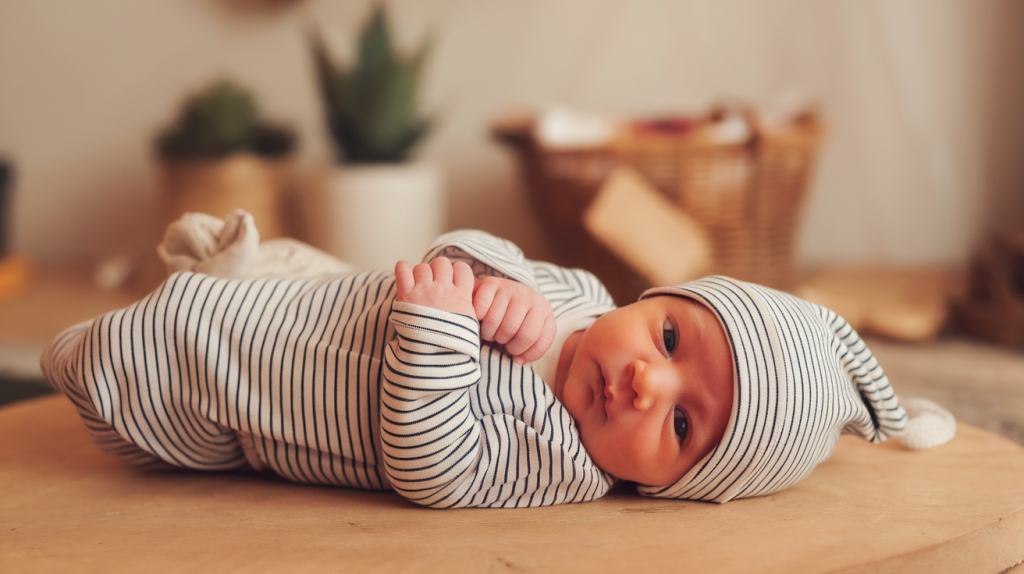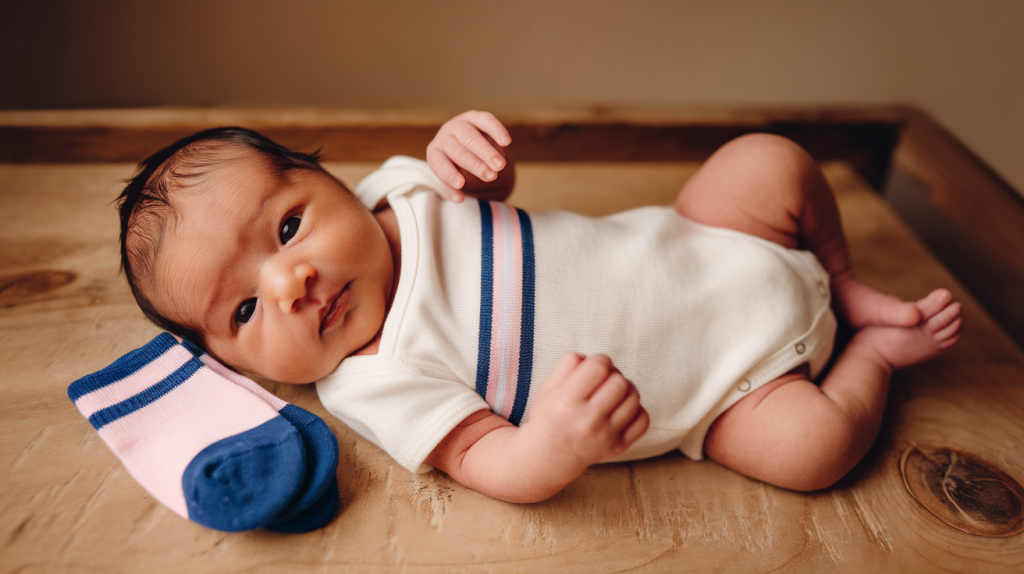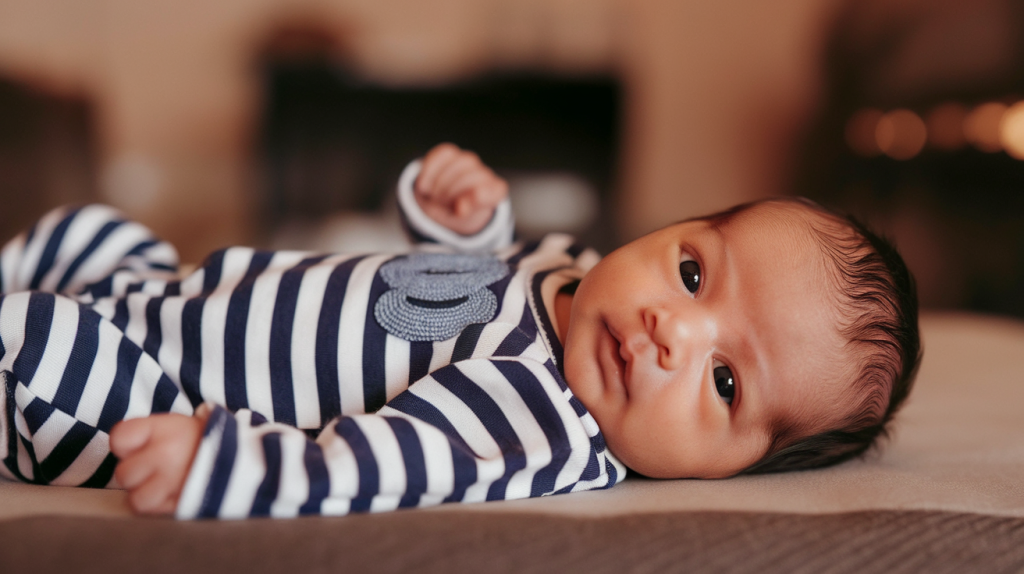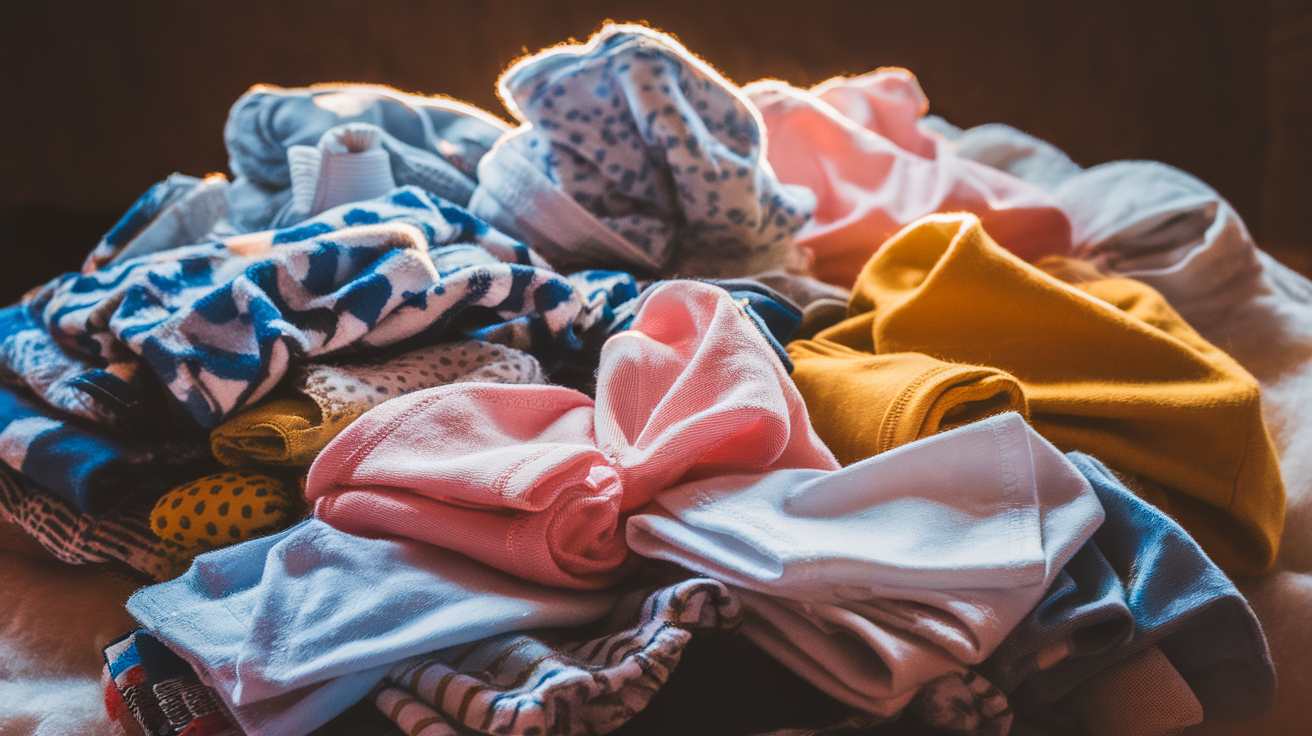Welcoming a newborn into the world is an exciting time for modern parents. As they prepare for their little one’s arrival, the quest for stylish yet practical clothing becomes a top priority. Gone are the days when baby clothes were limited to plain white onesies and basic sleepers. Today’s parents want their babies to look fashionable while staying comfortable and safe.
Finding the right balance between style and functionality is crucial when selecting newborn clothes. Parents need outfits that are easy to put on and take off, withstand frequent washing, and allow for quick diaper changes. At the same time, they want their babies to look adorable in Instagram-worthy ensembles. This blend of practicality and fashion has led to a boom in trendy yet functional newborn clothing options.
We’ll talk about here the essential stylish newborn clothing items that every modern parent should consider. We’ll also discuss how to create versatile outfits, choose comfortable fabrics, and select clothes that grow with your baby. These tips will help you build a wardrobe that’s both fashionable and practical for your little one.
What are the essential stylish newborn clothing items?

Dressing your newborn in stylish clothes isn’t just about making them look cute for photos – it’s about finding comfortable, practical items that make your life easier too. Let’s see some essential clothing items that combine fashion and function for your little one.
Trendy bodysuits and onesies
Bodysuits and onesies are the workhorses of any newborn wardrobe. These one-piece wonders snap at the bottom for easy diaper changes and keep your baby’s tummy covered no matter how much they wiggle. But who says practical can’t be stylish?
Today’s bodysuits come in a variety of trendy prints and colors. From classic stripes to whimsical animal patterns, you can find options to suit any style. Some even feature clever sayings or cute graphics that add personality to your baby’s outfit.
Why are bodysuits so popular? They’re versatile and easy to layer. You can pair them with pants for a complete outfit or let them stand alone on warm days. Plus, they grow with your baby – simply size up as needed.
When shopping for bodysuits, look for soft, breathable fabrics like organic cotton. Snap closures at the shoulders make it easier to slip them over your baby’s head, while expandable necklines help prevent messes during outfit changes.
Chic sleepers and footed pajamas
Sleep is precious for both babies and parents. Chic sleepers and footed pajamas can make nighttime changes a breeze while keeping your little one cozy and stylish.
Modern sleepers often feature convenient zippers that run from neck to toe, allowing for quick diaper changes without fully undressing your baby. Some even have two-way zippers, so you can easily access the diaper area without exposing your baby’s upper body to the cold.
But functionality doesn’t mean sacrificing style. Today’s sleepers come in a range of fashionable designs:
Minimalist patterns: Simple stripes or polka dots for a classic look.
Themed prints: Cute animals, space motifs, or floral designs to match your nursery decor.
Soft colors: Muted pastels or earthy tones that are gentle on the eyes during late-night changes.
When choosing sleepers, opt for flame-resistant materials for safety. Also, consider the season – lightweight cotton for summer and cozy fleece for winter can help regulate your baby’s temperature.
Fashionable kimono-style shirts
Kimono-style shirts are a game-changer for newborn fashion. These wrap-style tops fasten at the side, eliminating the need to pull anything over your baby’s head – a feature you’ll appreciate during those first few weeks when you’re still getting the hang of dressing a tiny, wiggly human.
What makes kimono shirts so fashionable? It’s all in the details. Many feature delicate prints or embroidery that add a touch of elegance to your baby’s outfit. The wrap style also creates a flattering silhouette, making these shirts perfect for both everyday wear and special occasions.
How do you style a kimono shirt? They pair beautifully with simple pants or leggings for a complete outfit. In warmer weather, they can even serve as a light jacket over a onesie.
When shopping for kimono shirts, look for soft, natural fabrics that will be gentle on your baby’s skin. Snaps or ties should be secure but easy to fasten, even when you’re sleep-deprived and operating with one hand.
Stylish leggings and pants
While your newborn might spend a lot of time in onesies and sleepers, having a few pairs of stylish leggings or pants can add variety to their wardrobe and make outfit planning more fun.
Baby leggings are incredibly versatile. They can be worn under dresses for extra warmth, paired with bodysuits for a complete outfit, or even layered under pants on chilly days. Look for leggings with an elastic waistband for comfort and easy dressing.
What about pants? Soft, stretchy joggers are a popular choice for newborns. They offer the comfort of leggings with a slightly more structured look. Some even come with faux drawstrings or pockets for added style.
When choosing pants or leggings for your newborn, consider the following:
Fabric: Opt for soft, breathable materials like cotton or bamboo.
Fit: Look for a relaxed fit that allows for easy movement and diaper changes.
Waistband: Elastic waists are most comfortable for newborns, but make sure they’re not too tight.
Your baby will grow quickly in the first few months, so don’t invest too heavily in any one size. A few well-chosen, mix-and-match pieces can create multiple outfits and see you through this fast-changing period in style.
Ultimately, the most stylish outfit for your newborn is one that keeps them comfortable and makes your life easier. With these essential items in your baby’s wardrobe, you’ll be ready for everything from tummy time to first photos to middle-of-the-night diaper changes – all while looking absolutely adorable.
How can parents create versatile newborn outfits?

Creating versatile newborn outfits doesn’t have to be a challenge. With a few smart strategies, you can build a wardrobe that’s both practical and stylish for your little one.
Mixing and matching basics
The key to a versatile newborn wardrobe lies in selecting pieces that work well together. Start by choosing a color palette that suits your taste. Neutral colors like white, gray, and beige are excellent foundations, as they pair easily with bolder hues.
Consider investing in solid-colored bodysuits and pants. These simple pieces can be mixed and matched endlessly, creating various looks without breaking the bank. For example, a white onesie can be paired with colorful pants one day and worn under a patterned romper the next.
How can you make basics more interesting? Try these ideas:
Pattern play: Combine a striped top with polka dot bottoms for a fun, mismatched look.
Color blocking: Pair complementary colors for a bold, modern outfit.
Texture mixing: Combine different fabric textures like cotton, terry cloth, and knits for visual interest.
Simplicity is often the key to style. A well-chosen set of basics can provide numerous outfit options with minimal effort.
Layering techniques for different seasons
Layering is a valuable skill for dressing newborns, especially as the weather changes. It allows you to adjust your baby’s outfit quickly to maintain their comfort throughout the day.
For cooler months, start with a thin, breathable layer like a cotton onesie. Add a long-sleeved shirt or sweater on top, followed by pants or leggings. If needed, finish with a jacket or cardigan. This approach allows you to remove layers as the day warms up or add them back on if it cools down.
In warmer weather, layering can still be useful. A light muslin wrap or cardigan over a short-sleeved onesie provides sun protection and warmth for air-conditioned spaces without overheating your baby.
Layering also extends the life of seasonal clothing. That adorable summer romper? Layer it over a long-sleeved bodysuit and leggings to transition it into fall.
Accessorizing with trendy hats and socks
Accessories can transform a simple outfit into something special. Hats and socks are practical additions that also add style to your newborn’s look.
Hats serve multiple purposes for newborns. They keep your baby warm, protect delicate skin from the sun, and add a cute finishing touch to any outfit. Consider having a variety of hats on hand:
- A soft beanie for cooler days
- A wide-brimmed sun hat for outdoor adventures
- A stylish cap for dressier occasions
Socks are another versatile accessory. Beyond keeping tiny toes warm, they can add a pop of color or pattern to an otherwise simple outfit. Look for socks with fun designs or those that mimic shoes for a playful touch.
When choosing accessories, prioritize comfort and safety. Avoid anything with small parts that could pose a choking hazard, and make sure hats and socks fit properly without restricting movement.
Incorporating statement pieces
While basics form the foundation of a versatile wardrobe, statement pieces add personality and flair. These are the items that make your baby’s outfit stand out and reflect your personal style.
A statement piece could be a boldly patterned romper, a cute graphic tee, or a dress with unique details like ruffles or embroidery. The key is to use these pieces sparingly and pair them with simpler items to create balanced outfits.
How can you incorporate statement pieces effectively? Here are some tips:
- Use them as the focal point of an outfit, keeping other elements simple.
- Pair a statement top with neutral bottoms or vice versa.
- Save them for special occasions or photos to make them feel extra special.
Don’t be afraid to choose statement pieces that reflect your interests or sense of humor. A onesie with a clever saying or a tiny denim jacket can be a fun way to express your style through your baby’s clothing.
What fabrics are both stylish and comfortable for newborns?

Choosing the right fabrics for your newborn’s clothing is essential for their comfort and well-being. Babies have sensitive skin that requires gentle materials, but you don’t have to compromise on style.
Soft and breathable cotton options
Cotton is a staple in baby clothing for good reason—it’s soft, breathable, and hypoallergenic. These qualities make it ideal for keeping your baby comfortable while minimizing irritation. But not all cotton is created equal. Have you considered the benefits of different types of cotton?
- Organic Cotton: Grown without harmful pesticides or fertilizers, organic cotton is gentle on your baby’s skin and eco-friendly. It’s perfect for sensitive skin and reduces the risk of allergies.
- Pima Cotton: Known for its extra-long fibers, Pima cotton offers a silky texture and durability, making it a luxurious yet practical choice.
- Egyptian Cotton: This variety is celebrated for its smooth finish and strength, providing a premium feel that withstands frequent washing.
Cotton also comes in lightweight options like muslin, which is ideal for swaddling or summer clothing due to its breathability.
Luxurious bamboo blends
Bamboo fabric has gained popularity among parents seeking soft and sustainable options for their newborns. Why is bamboo such a standout choice? Its natural properties make it both stylish and functional.
Bamboo is three times softer than cotton, offering a silky texture that feels gentle against delicate skin. It’s also naturally hypoallergenic, making it less likely to cause irritation or rashes. Additionally, bamboo fabric regulates temperature effectively—it keeps your baby cool in warm weather and cozy during colder months.
Here’s what makes bamboo even more appealing:
- Moisture-Wicking: Bamboo absorbs moisture efficiently, keeping your baby dry and reducing the risk of diaper rash.
- UV Protection: This fabric provides natural protection against harmful sun rays, which is perfect for outdoor wear.
- Eco-Friendly: Bamboo grows quickly without the need for pesticides, making it a sustainable choice.
Whether you’re shopping for swaddles, onesies, or blankets, bamboo blends offer comfort and durability.
Eco-friendly organic materials
If sustainability is important to you, organic fabrics are worth considering. These materials are grown using environmentally friendly practices that avoid synthetic chemicals. Organic fabrics not only protect your baby’s skin but also contribute to a healthier planet.
Organic hemp and recycled cotton are two examples of eco-friendly options that combine softness with durability. Hemp is particularly strong and resistant to wear, making it suitable for items like baby jackets or pants. Recycled cotton repurposes existing fibers into new clothing, reducing waste while maintaining comfort.
Below are some benefits of organic fabrics:
- Gentle on Skin: Free from toxic residues that can irritate delicate skin.
- Breathable: Allows air circulation to regulate body temperature.
- Durable: Designed to withstand frequent washing without losing softness.
Choosing organic materials supports sustainable farming practices while ensuring your baby stays comfortable.
Trendy performance fabrics
Performance fabrics are an innovative addition to newborn wardrobes. These materials blend style with functionality by incorporating features like stretchability and moisture control. While traditionally used in athletic wear, performance fabrics are now being adapted for baby clothing.
Why should you consider performance fabrics? They’re designed to handle active days while keeping your baby comfortable. For instance:
- Cotton Jersey: This stretchy fabric moves with your baby and provides excellent breathability.
- Tencel Lyocell: Made from sustainably sourced wood pulp, Tencel Lyocell wicks away moisture while maintaining a smooth texture.
- Bamboo Viscose: A blend of bamboo fibers with other materials adds flexibility without compromising softness.
These fabrics are ideal for items like sleepsuits or playwear that require durability without sacrificing comfort.
How to choose newborn clothes that grow with your baby?
Choosing clothes that grow with your baby is a smart way to save time, money, and effort while keeping your little one comfortable. Babies grow quickly, and investing in adaptable clothing ensures their wardrobe can keep up with these changes.
Adjustable features for extended wear
What makes clothing truly adaptable? Adjustable elements like elastic waistbands, foldable cuffs, or snap closures are key. These features allow garments to accommodate rapid growth without compromising fit or comfort.
Elastic waistbands are particularly useful for pants and leggings. They stretch as your baby grows, ensuring a snug yet comfortable fit. Foldable cuffs on sleeves and pant legs extend the length of the garment, making it suitable for multiple stages of growth.
Here’s how adjustable features can benefit you:
- Extended use: Clothes with adjustable elements last longer, reducing the need for frequent replacements.
- Improved fit: These features ensure the garment remains comfortable as your baby grows.
- Ease of dressing: Snap closures or zippers make outfit changes quicker and less stressful.
When shopping, prioritize items with these features to maximize their lifespan in your baby’s wardrobe.
Convertible designs for multiple uses
Convertible clothing is a game-changer for parents seeking versatility. These pieces can transform from one style to another, providing flexibility for different situations. For example, a gown that converts into a romper allows you to switch between sleepwear and playwear effortlessly.
Why are convertible designs so practical? They adapt to your baby’s needs throughout the day. Whether it’s transitioning from nap time to tummy time or preparing for an outing, convertible outfits simplify the process without requiring multiple wardrobe changes.
Below are some examples of convertible designs:
- Sleep gowns: These can be adjusted into rompers for daytime wear.
- Two-in-one jackets: Reversible jackets offer different styles in one piece.
- Multi-purpose bibs: Dual-sided bibs provide extended use by flipping to a clean side when needed.
These designs not only save space in your baby’s closet but also reduce laundry loads by minimizing the number of garments used daily.
Size-flexible options
Size flexibility is another important factor when choosing clothes that grow with your baby. Look for garments labeled with overlapping sizes, such as “0-3 months” or “3-6 months.” These sizes accommodate growth spurts more effectively than single-size items.
What makes size-flexible options stand out? They’re designed with additional room or stretchability to fit babies across a wider range of sizes. For instance, harem-style pants provide extra space for diapers while allowing freedom of movement. Similarly, tops with expandable necklines make dressing easier as your baby grows.
Here are some benefits of size-flexible clothing:
- Cost-efficiency: Fewer purchases are needed as these items cover multiple growth stages.
- Comfort: Stretchy fabrics and roomy designs prevent tightness or irritation.
- Practicality: They simplify shopping by reducing guesswork about sizing.
Investing in size-flexible pieces ensures you’re prepared for those unexpected growth spurts without scrambling for new clothes.
Investment pieces that last beyond the newborn stage
Certain clothing items are worth spending a little extra on because they’re designed to last well beyond infancy. These investment pieces combine durability with adaptability, making them ideal for long-term use. Think high-quality rompers, jackets, or leggings that withstand frequent washing and wear without losing their shape or softness.
Why should you consider investment pieces? While they may cost more upfront, their extended lifespan makes them more economical in the long run. Brands offering sustainable materials or reinforced stitching often produce garments that retain their quality over time.
Here’s what to look for in investment pieces:
- Durable fabrics: Opt for materials like organic cotton or bamboo blends that hold up well.
- Reinforced seams: Strong stitching prevents wear and tear during active play.
- Neutral designs: Choose versatile colors and patterns that remain stylish as trends change.
Stylish Comfort for Growing Babies
Choosing newborn clothes that grow with your baby is a smart approach to building a functional and fashionable wardrobe. By focusing on adjustable features, convertible designs, size-flexible options, and investment pieces, you can create a collection that adapts to your little one’s rapid growth. These strategies not only save money but also reduce the stress of constantly shopping for new outfits.
As you curate your baby’s wardrobe, consider the long-term value of each piece. Opt for clothing that offers versatility and durability without compromising on style. With thoughtful selections, you can enjoy watching your baby grow comfortably in outfits that evolve alongside them. This approach to dressing your newborn allows you to focus more on cherishing precious moments and less on managing an ever-changing closet.
Frequently Asked Questions
Q: What are adjustable features in baby clothing?
A: Adjustable features include elements like elastic waistbands, foldable cuffs, and snap closures that allow garments to fit your baby comfortably as they grow.
Q: How do convertible designs benefit newborn outfits?
A: Convertible designs allow clothing items to change from one style to another, providing versatility for different occasions and reducing the need for multiple outfits.
Q: What are size-flexible options in baby clothes?
A: Size-flexible options refer to garments labeled with overlapping sizes or those designed with extra room and stretchability to accommodate rapid growth.
Q: Why should I invest in high-quality baby clothing?
A: Investing in high-quality clothing ensures durability and longevity, allowing you to use these pieces well beyond the newborn stage, making them more economical over time.
Q: What types of fabrics are best for adjustable baby clothes?
A: Fabrics like organic cotton, bamboo blends, and stretchy materials are ideal for adjustable baby clothes as they provide comfort and flexibility.
Q: How can I tell if a piece of baby clothing is durable?
A: Look for reinforced seams, high-quality materials, and strong stitching when evaluating the durability of baby clothing.
Q: Are there specific brands known for versatile newborn clothing?
A: Many brands focus on producing versatile newborn clothing; look for those that emphasize sustainability, quality materials, and innovative designs.
Q: How often should I update my baby’s wardrobe?
A: It’s best to assess your baby’s wardrobe every few months, especially during growth spurts, to ensure they have appropriately sized and functional clothing.

